Abstract
In two experiments, humans received tokens either on a fixed-interval schedule for plunger pulling or various response-nondependent fixed-time schedules ranging from 16 to 140 seconds. Locomotor activity such as walking, shifting weight, or pacing was recorded in quarters of the interreinforcement interval to examine the induced characteristics of that behavior in humans. While performance was variable, several characteristics were present that have counterparts in experiments with nonhumans during periodic schedules of food reinforcement: (a) first quarter rates, and sometimes overall rates, of locomotor activity were greater during intervals that terminated in a visual stimulus and token delivery than those without: (b) overall rates of locomotor activity were greater during fixed-time 16-second schedules than during fixed-time 80- or 140-second schedules; (c) rates of locomotor activity decreased during the interreinforcement intervals; (d) locomotor activity was induced by response-dependent and response-nondependent token delivery. These results showed that the rate and temporal pattern of locomotor activity can be schedule-induced in humans.
Full text
PDF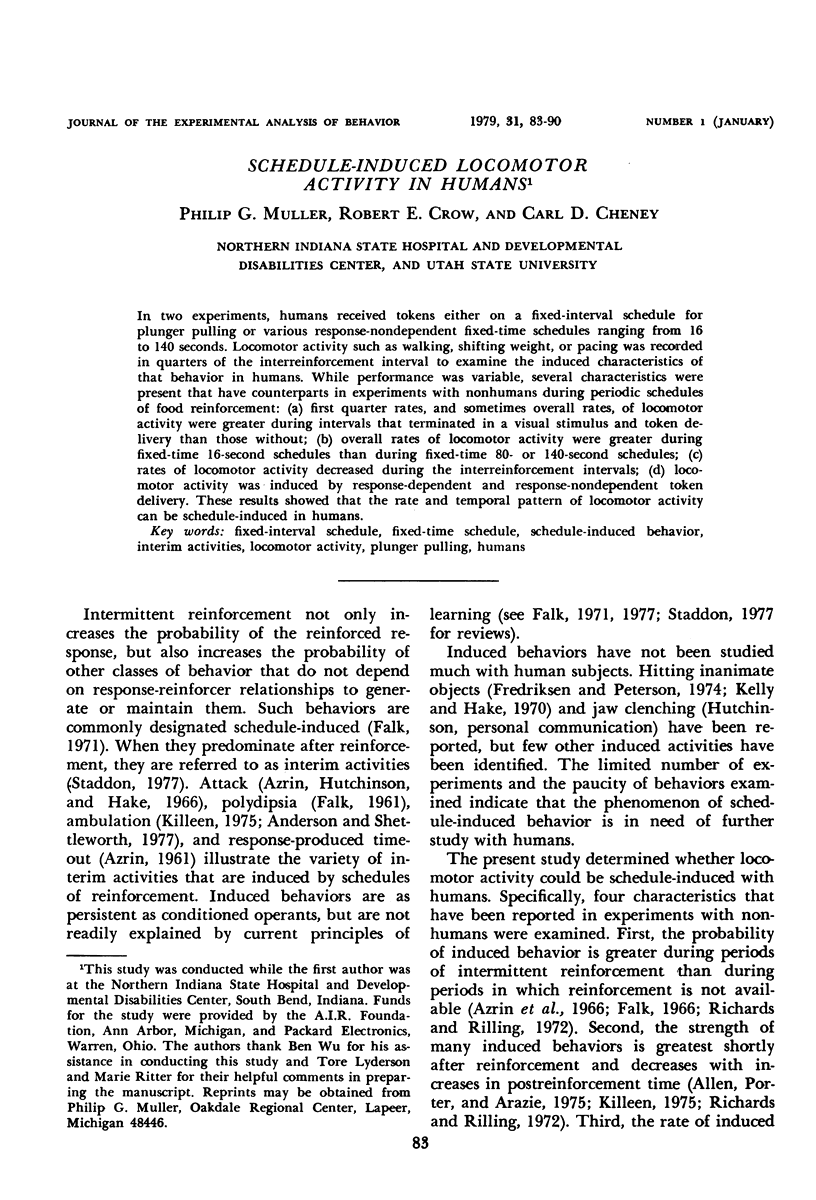
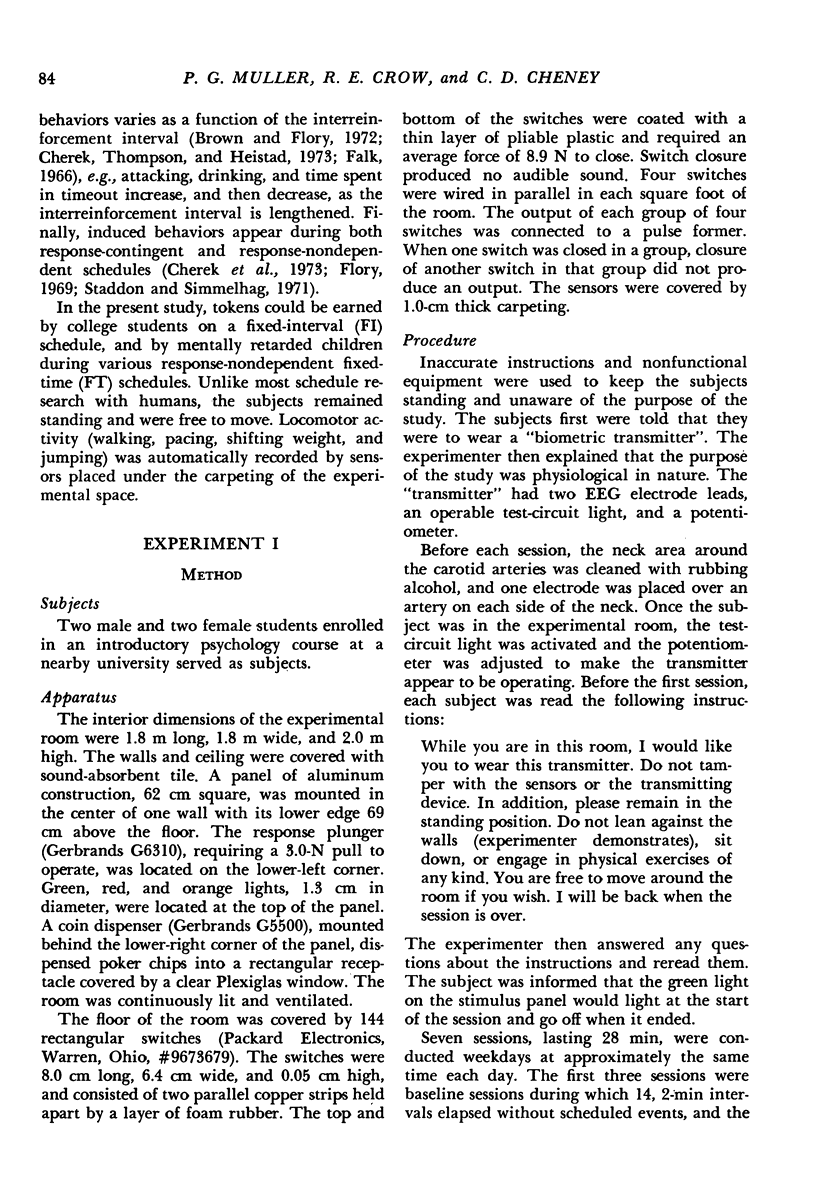
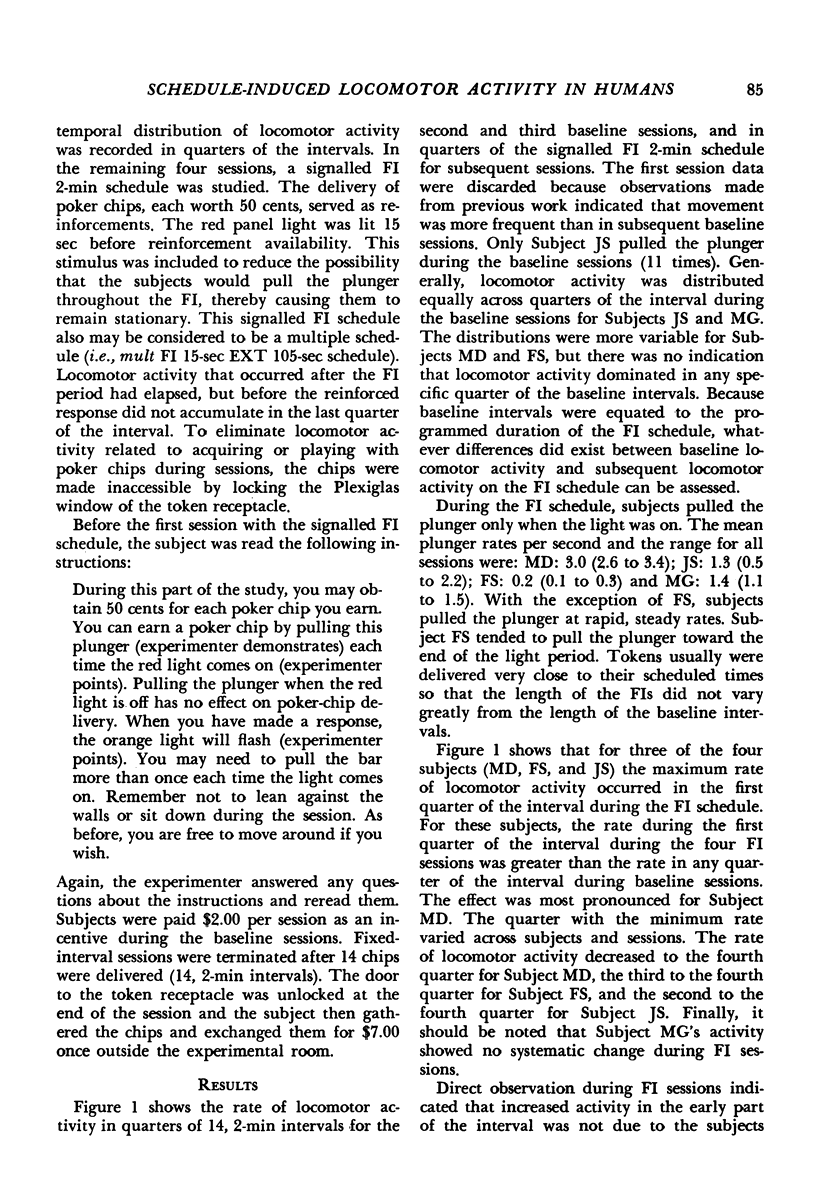
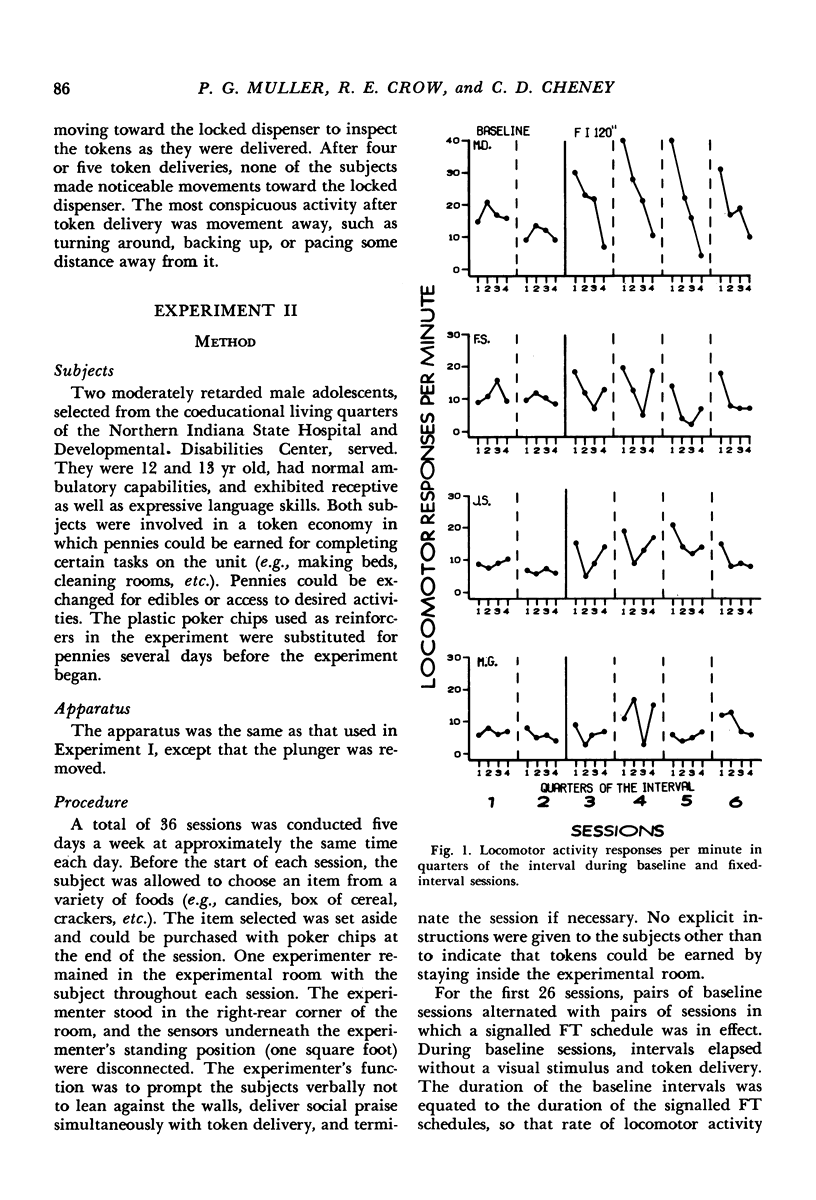


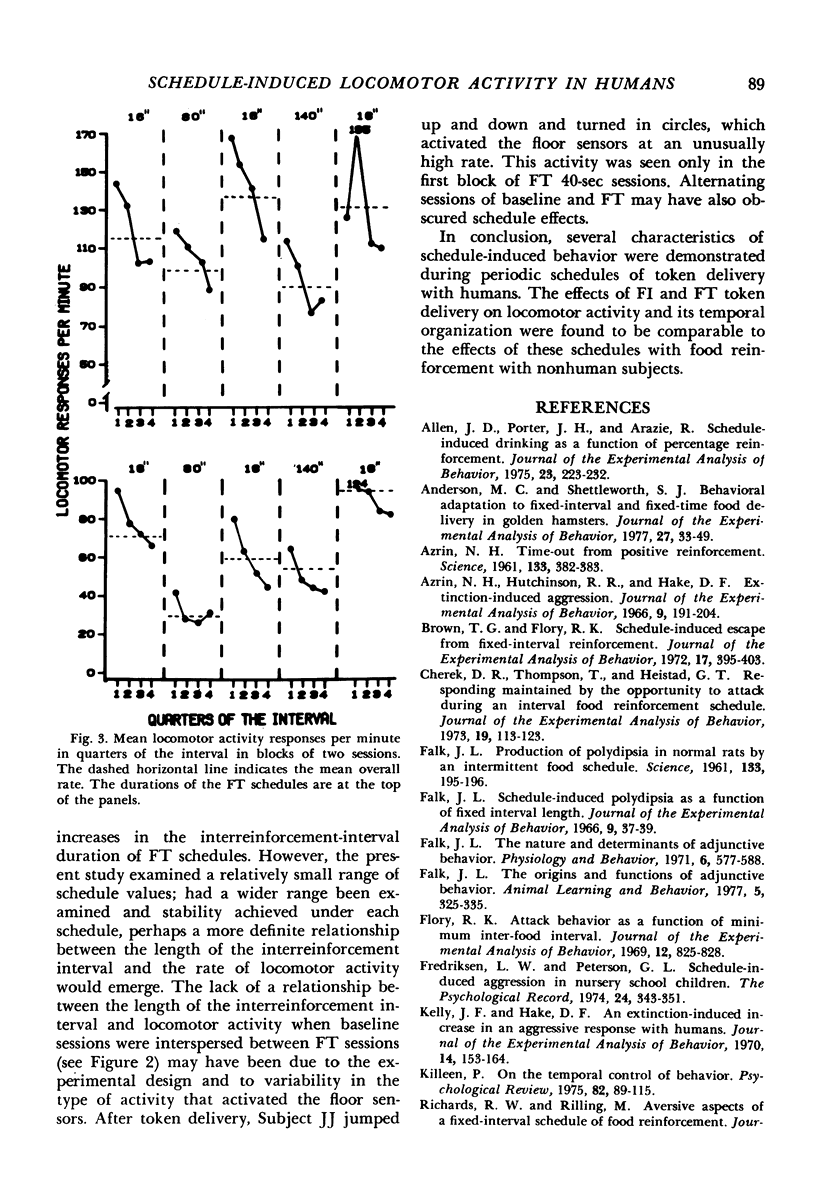
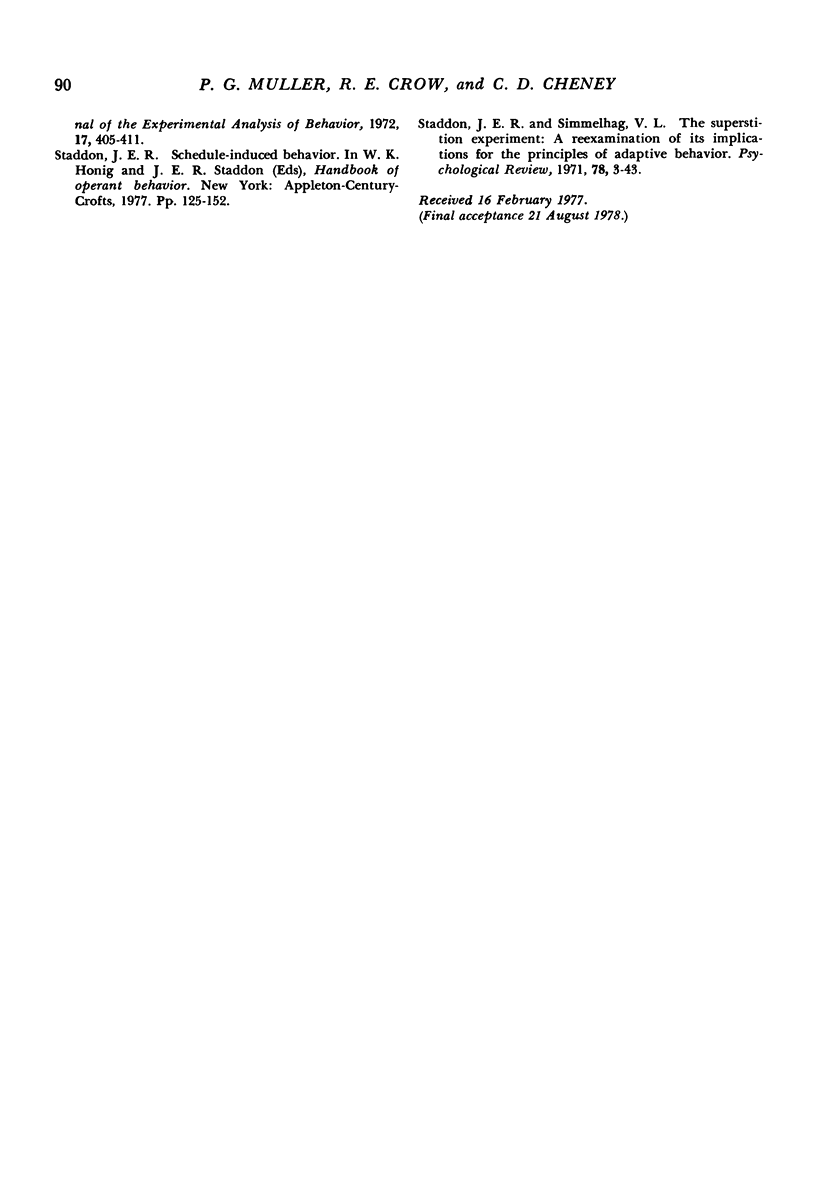
Selected References
These references are in PubMed. This may not be the complete list of references from this article.
- AZRIN N. H. Time-out from positive reinforcement. Science. 1961 Feb 10;133(3450):382–383. doi: 10.1126/science.133.3450.382. [DOI] [PubMed] [Google Scholar]
- Allen J. D., Porter J. H., Arazie R. Schedule-induced drinking as a function of percentage reinforcement. J Exp Anal Behav. 1975 Mar;23(2):223–232. doi: 10.1901/jeab.1975.23-223. [DOI] [PMC free article] [PubMed] [Google Scholar]
- Anderson M. C., Shettleworth S. J. Behavioral adaptation to fixed-interval and fixed-time food delivery in golden hamsters. J Exp Anal Behav. 1977 Jan;27(1):33–49. doi: 10.1901/jeab.1977.27-33. [DOI] [PMC free article] [PubMed] [Google Scholar]
- Azrin N. H., Hutchinson R. R., Hake D. F. Extinction-induced aggression. J Exp Anal Behav. 1966 May;9(3):191–204. doi: 10.1901/jeab.1966.9-191. [DOI] [PMC free article] [PubMed] [Google Scholar]
- Brown T. G., Flory R. K. Schedule-induced escape from fixed-interval reinforcement. J Exp Anal Behav. 1972 May;17(3):395–403. doi: 10.1901/jeab.1972.17-395. [DOI] [PMC free article] [PubMed] [Google Scholar]
- Cherek D. R., Thompson T., Heistad G. T. Responding maintained by the opportunity to attack during an interval food reinforcement schedule. J Exp Anal Behav. 1973 Jan;19(1):113–123. doi: 10.1901/jeab.1973.19-113. [DOI] [PMC free article] [PubMed] [Google Scholar]
- FALK J. L. Production of polydipsia in normal rats by an intermittent food schedule. Science. 1961 Jan 20;133(3447):195–196. doi: 10.1126/science.133.3447.195. [DOI] [PubMed] [Google Scholar]
- Falk J. L. Schedule-induced polydipsia as a function of fixed interval length. J Exp Anal Behav. 1966 Jan;9(1):37–39. doi: 10.1901/jeab.1966.9-37. [DOI] [PMC free article] [PubMed] [Google Scholar]
- Falk J. L. The nature and determinants of adjunctive behavior. Physiol Behav. 1971 May;6(5):577–588. doi: 10.1016/0031-9384(71)90209-5. [DOI] [PubMed] [Google Scholar]
- Flory R. Attack behavior as a function of minimum inter-food interval. J Exp Anal Behav. 1969 Sep;12(5):825–828. doi: 10.1901/jeab.1969.12-825. [DOI] [PMC free article] [PubMed] [Google Scholar]
- Kelly J. F., Hake D. F. An extinction-induced increase in an aggressive response with humans. J Exp Anal Behav. 1970 Sep;14(2):153–164. doi: 10.1901/jeab.1970.14-153. [DOI] [PMC free article] [PubMed] [Google Scholar]


